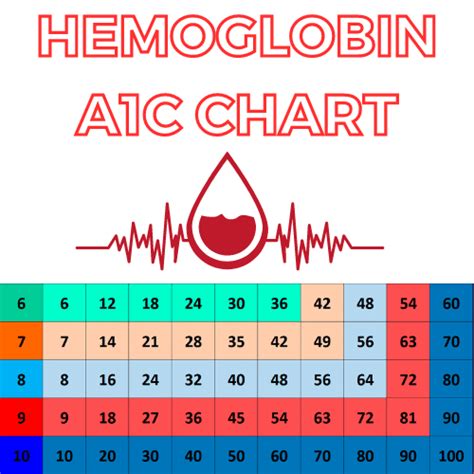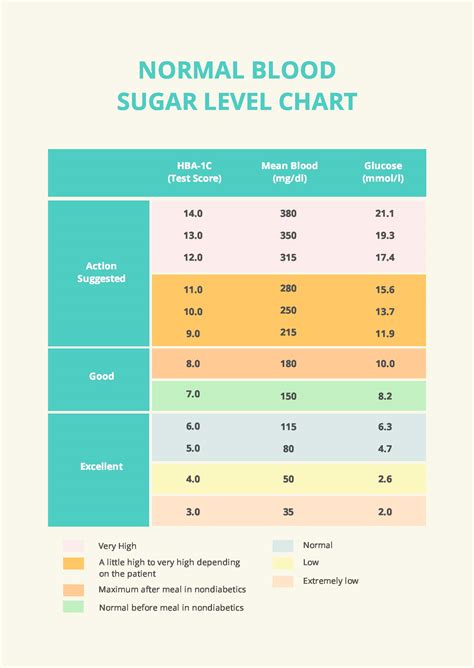The connection between hemoglobin A1c (HbA1c) and diabetes is a critical aspect of managing and understanding the condition. HbA1c, a form of hemoglobin, is a protein in red blood cells that carries oxygen throughout the body. When glucose (sugar) is present in the blood, it can bind to the hemoglobin in red blood cells, forming a substance called HbA1c. The amount of glucose that binds to hemoglobin is directly related to the amount of glucose in the blood. Thus, HbA1c serves as a proxy measure for average blood glucose levels over the preceding 3 months, offering a valuable indicator of how well diabetes is being managed.
Understanding HbA1c Levels
To grasp the significance of HbA1c in diabetes management, it’s essential to understand the ranges associated with different levels of glucose control:
- Normal Levels: Typically, an HbA1c level below 5.7% is considered normal. This indicates that the average blood glucose levels have been within a target range, suggesting a low risk of developing diabetes.
- Prediabetes: An HbA1c level between 5.7% and 6.4% suggests prediabetes, a condition where blood sugar levels are higher than normal but not high enough to be classified as diabetes. Individuals with prediabetes are at increased risk of developing type 2 diabetes and cardiovascular disease.
- Diabetes: An HbA1c level of 6.5% or higher indicates diabetes. This level suggests that blood glucose levels have been consistently high over the past 3 months, necessitating medical intervention to manage the condition and prevent complications.
The Role of HbA1c in Diabetes Management
HbA1c testing is a cornerstone of diabetes management. It provides healthcare providers with a clear picture of a patient’s average blood glucose levels over time, helping to:
- Assess the Risk of Complications: High HbA1c levels over time are associated with an increased risk of diabetes complications, including heart disease, kidney disease, and nerve damage. Monitoring HbA1c helps in the early identification of individuals at higher risk, enabling timely interventions.
- Adjust Treatment Plans: Based on HbA1c results, healthcare providers can adjust medication, diet, and exercise recommendations to help patients achieve better glucose control. This tailored approach ensures that treatment plans are effective and responsive to the patient’s changing needs.
- Promote Lifestyle Changes: For individuals with prediabetes or diabetes, knowing their HbA1c levels can be a powerful motivator for making lifestyle changes. Understanding the direct impact of diet and physical activity on glucose levels can encourage more effective self-management of the condition.
Factors Influencing HbA1c Levels
Several factors can influence HbA1c levels, including:
- Red Blood Cell Turnover: Conditions that affect the lifespan of red blood cells, such as hemolytic anemia, can falsely lower HbA1c levels, even if blood glucose control is poor.
- Pregnancy: Pregnancy can affect HbA1c levels due to changes in red blood cell turnover and glucose metabolism.
- Hemoglobin Variants: Certain genetic hemoglobin variants can interfere with HbA1c testing, potentially leading to inaccurate results.
Conclusion
HbA1c is a vital tool in the diagnosis and management of diabetes. By understanding HbA1c levels and their implications, individuals can better manage their condition, reduce the risk of complications, and improve their quality of life. Regular monitoring of HbA1c, combined with lifestyle adjustments and, when necessary, medical interventions, forms the basis of effective diabetes care.
What does an HbA1c level of 7% mean for a diabetes patient?
+An HbA1c level of 7% indicates that a diabetes patient has had good control of their blood glucose levels over the past 3 months. This level is often considered a target for many individuals with diabetes, as it suggests a reduced risk of long-term complications associated with the disease. However, the target HbA1c level can vary among individuals based on factors such as age, other health conditions, duration of diabetes, life expectancy, resources, and support system. It’s crucial for patients to discuss their specific target HbA1c range with their healthcare provider.
Can HbA1c levels be affected by factors other than blood glucose control?
+Yes, several factors can influence HbA1c levels beyond blood glucose control. These include the lifespan of red blood cells, certain hemoglobin variants, and conditions like pregnancy or kidney disease. It’s essential for healthcare providers to consider these factors when interpreting HbA1c results to ensure accurate assessments of diabetes management.
How often should HbA1c be tested for diabetes management?
+The frequency of HbA1c testing depends on the individual’s diabetes type, the stability of their blood glucose control, and their treatment plan. Generally, HbA1c is measured at least twice a year in patients with stable diabetes control, but it may be checked more frequently (every 3 months) for those whose therapy has changed or who are not meeting their glycemic goals. Regular monitoring helps in making timely adjustments to the treatment plan, thereby improving glucose control and reducing the risk of diabetes-related complications.



